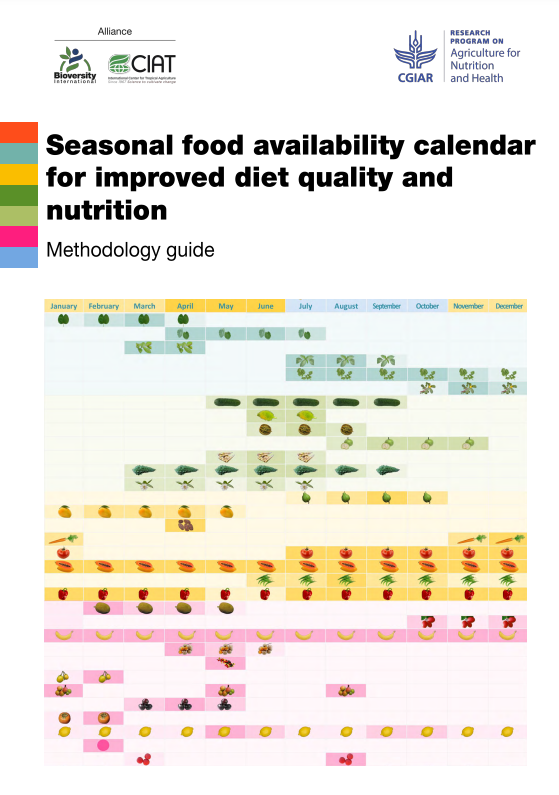This guide presents a participatory approach to map seasonal food availability in a locality. Seasonality is one of the key factors in determining food availability, especially of perishable foods like fruits and vegetables.
Information on seasonal food availability can be used as an entry point to understand local dynamics related to food and nutrition security and to design and develop projects and activities that, through a food systems approach, ultimately aim at the empowerment of local communities to manage and use local agrobiodiversity for improved nutrition and health. This guidebook provides advice on how to prepare for and implement data collection on seasonal food availability. It also provides guidance on how to use the data collected to develop food availability calendars and nutrition education materials to teach consumers about seasonally-available, nutrient-dense local foods. The approach, involving data collection in focus groups, enables a rapid assessment of diversity and seasonality in a locality that can capture food from multiple sources such as local cultivation, wild sourcing, and markets.
The data collected correspond to perceived seasonal availability, which can be verified by direct observation depending on project needs. This guidebook targets non-governmental organizations (NGOs), research organizations and development agencies, while the methodology described can be adopted by anyone interested in mapping seasonal food availability.
Lochetti, G.; Meldrum, G.; Kennedy, G.; Termote, C.

